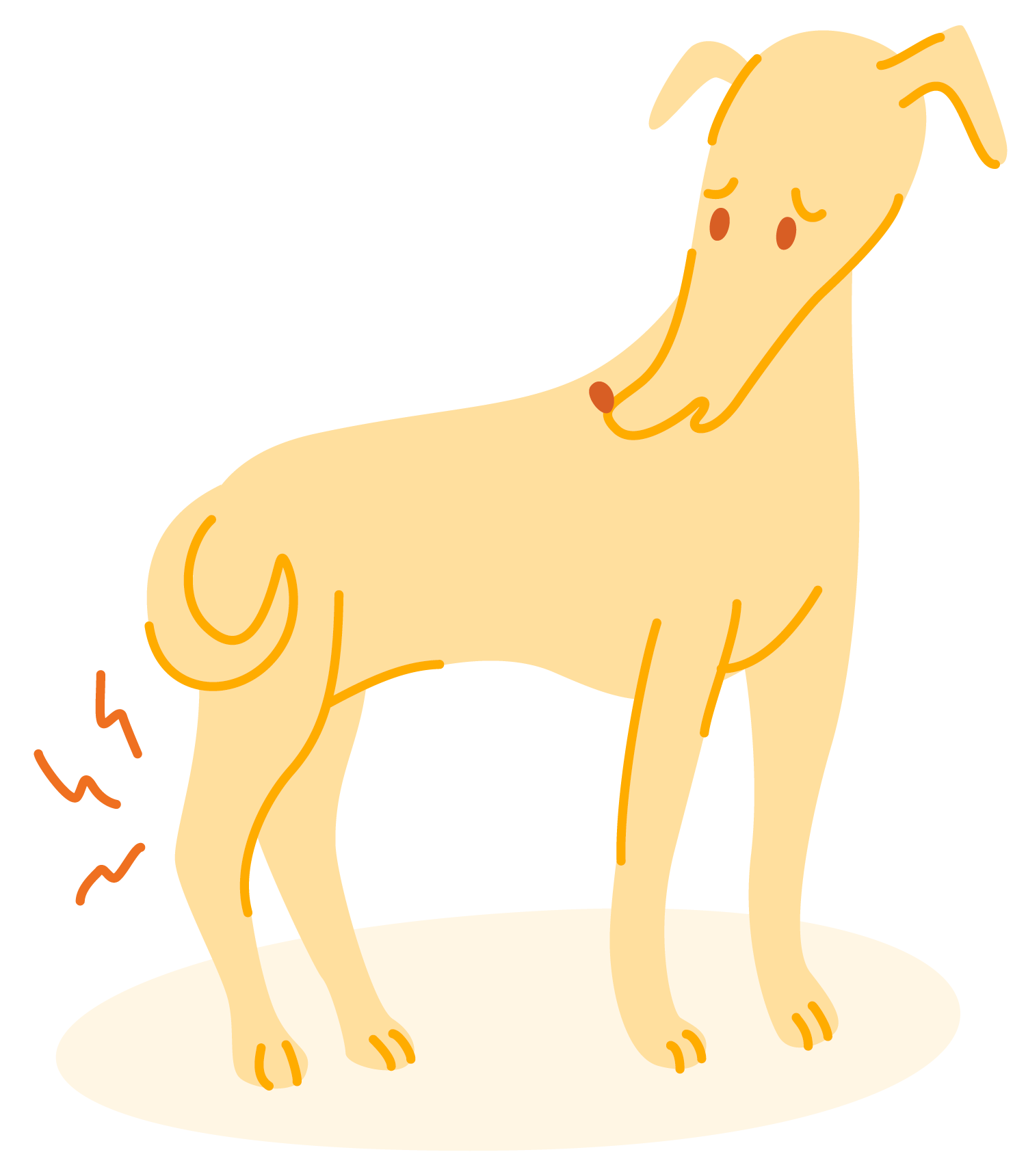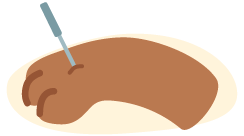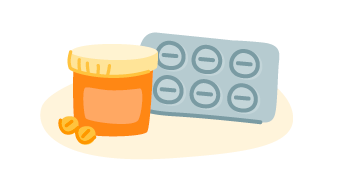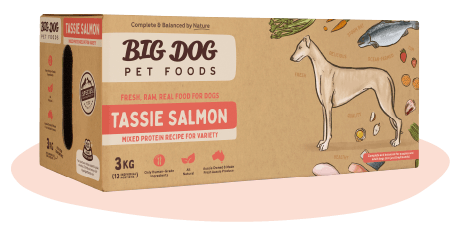Complete guide to dog joint pain and prevention

By Dr Duncan Houston, Veterinarian and Pet Nutritionist

Pain… it’s something that we all experience no matter our age, especially when it comes to joints. Our furry friends can’t tell us when it hurts so we base this off changes in how they move and act, no matter their species size or breed, although some are more predisposed. This can be non-weight bearing lameness, just a mild limp as they walk or even just not wanting to jump on and off the couch or go up and down stairs. As a vet this is extremely common in practice, especially sudden onset lameness as an emergency veterinarian. Today though I’m writing more about prevention of progessive joint pain, for instance arthritis, rather than preventing sudden onset.
So what can we do to prevent joint pain? I’m going to touch on as much as I can so you have a whole toolkit for how to prevent this from happening to your best friend!

Diet, nutrition… whatever you wanna call it… this is what will make a difference if you stay consistent. So, what do I want to see as a vet?... fresh, natural whole food diets with a good amount of healthy fats. Never try to make a wholefood diet at home without the help of a qualified nutritionist or veterinarian, unless you are using products that make this type of diet easy and convenient.

The best and cheapest thing to reduce joint pain is proper weight management. I see too many overweight animals which results in worse joint pain as their joints are having to bear more weight than they need to and in addition to this they are generally not even fit enough to carry that additional weight. So please, I understand you love your pets and most people show this by giving treats… try your best to work with your vet or nutritionist to maintain an ideal body weight. On the flip side, make sure they are not too skinny either, otherwise they will lose too much muscle mass and then not have the strength to support themselves… hence… management! It has been shown that weight management is especially beneficial for animals with arthritis and hip dysplasia.
A high meat content means highly bioavailable protein which can easily be synthesised by the body for muscle building and maintenance. This is needed as an older animal will struggle to utilise protein for maintaining muscle and preventing muscle wastage. Less muscle means less stabilisers for movement and support, hence unfortunately weakness and pain can result in overloading other joints… leading to pain.
You’ve probably heard it all before but fats are the best thing to have in their diet, but remember not all fats are good! You want your pet to be consuming a higher ratio of omega-3 fatty acids opposed to omega-6 fatty acids. Omega-6 fatty acids are more present in processed foods whereas omega-3’s can be found in natural sources. This isn’t to say that omega-6 fatty acids aren’t in natural sources but omega-3’s tend to be higher especially in fish such as salmon, sardines, cod liver oil, mackerel, green-lipped mussel and tuna. This is because they inhibit COX-2 enzymes which in short… helps prevent inflammation within the body. Another benefit found was that omega-3’s also prevented cartilage degradation, fish oil and krill oil potentially being superior in this to green lipped mussels.

Now this might sound a bit odd but I’m moving from what we eat to what’s actually in our gut… not food but the bacteria, referred to as the microbiome, and our general gut tissue health. Gut health has been shown to be directly linked to inflammation within the body. So by adding probiotics and eating a range of fresh, natural wholefoods, you can build up the right bacteria within your gut. Generally the microbiome and inflammation within the body is in relation to immune mediated disease but this is also a potential cause of arthritis being rheumatoid arthritis. Although there is conflicting evidence with studies not always showing an effect; but why not just try to keep your pets as healthy as possible? Even though dogs are one the carnivorous side of omnivores and cats are obligate carnivores in theory it is still a good idea to include a range of digestible and non-digestible fibres in their diet as well as fermented foods and additional probiotics.
Nice Supplement Additions

Supplements are an easy addition to their diet! It can even just be as simple as to add a fish oil tablet and turmeric every day or two, the amount depends on their weight.
Fatty Acids
Omega-3 fatty acids found in krill oil, fish oil, cod liver oil, hemp oil, sardines and flaxseed oil are great additions. We’ve been over these before in diet but they’re also here in supplements as you can always add a bit more as well as vary the source. Omega-3’s can be found in other sources but these are some easy off the shelf ones to grab and can be relatively cheap.
Antioxidants
Antioxidants can best be found in colourful, seasonal fruits and veggies, a good example are berries, can be high in antioxidant content reducing free radical damage, repairing cells, cardiovascular health and taking out the trash by cleaning out toxins.
Glucosamine and Chondroitin
Glucosamine and chondroitin are natural within cartilage so by adding them to your pet’s diet can help support the growth and maintenance of cartilage throughout their life…we need cartilage as it's there to keep joints smooth and gliding nicely to reduce friction. If our joints aren’t smooth then this leads to friction and inflammation resulting in PAIN! So, referring back to diet, glucosamine and chondroitin are in all cartilage, Therefore, by feeding a natural diet including cartilage from other animals provides a bioavailable and potentially more effective source than synthetic supplementation.
Turmeric (Curcumin)
Turmeric is a very well known anti-inflammatory and antioxidant, but you don’t want to have too much as in high doses it can cause digestive issues and thin the blood. A rough dose rate is between 30-50 mg per kilogram in dogs which is around ⅛ - ¼ of a teaspoon per day for every 5 kilograms. Although for accurate doses you should know that curcumin supplements provide a more consistent dose than just regular turmeric from the shops.
Cinnamon
Cinnamon has anecdotally been used as an anti-inflammatory for many conditions, one of which includes pain and inflammation. The use of this is more of a long term addition to a diet but there are some suggestions to use it in higher doses for two week periods. Doses range by quite a bit so I am not suggesting any specific amounts but just by adding a small sprinkle to any diet over a long period can help.
Methylsulfonylmethane (MSM)
MSM can help preserve and nourish cartilage. It has mainly been used as an anti-inflammatory not just for arthritis, but a range of inflammatory conditions. There are many pet supplements for MSM on the market that can be used in conjunction with their current diet and I suggest the use of this throughout an animal’s life. [13]
Bone Broth and Collagen
Bone broth is high in collagen. Collagen in short can help to line the gastrointestinal tract to help fix leaky gut syndrome, which is associated with generalised inflammation within the body. Collagen has been shown to assist with joint health and reducing joint pain in human research. Concentrated collagen supplements have been shown to be more effective than supplementation of glucosamine and chondroitin. [8]
Green Lipped Mussels
Green lipped mussels contain glucosamine, which we’ve touched on earlier, as well as omega-3 fatty acids, such as EPA and DHA. The benefit of this is that it’s sourced naturally rather than synthetically, which means it is more bioavailable and can be absorbed and utilised by the body faster. They’ve also been shown to reduce joint swelling, crepitus (popping and cracking noise when a joint is moved) and pain as well as potentially regenerating damaged cartilage. Ideally dose at 55mg per kilogram of bodyweight per day. [3]
Natural Eggshell Membrane (NEM)
Natural Eggshell Membrane is the thin membrane underneath the hard shell of an egg, this is one reason why Big Dog includes whole eggs in all of its foods. It’s been shown to reduce pain and cartilage degeneration in human research. Ideally dose at 15mg per kilogram of body weight per day. [12]
Hemp Oil (CBD Oil)
Hemp oil provides a great source of fatty acids for joints but within it can be CBD oil which can help with pain. Concentrated CBD sources are more likely to cause an effect but studies are still needed to confirm the efficacy and to further assess how it is best used. [7][11]
Lifestyle Tips

Consistent exercise is vital, but remember it doesn’t always have to be strenuous. As an animal ages you want to try to prevent the sudden twists and turns that can result in overuse and overstimulation of joints. Swimming is an awesome way for them to get some exercise without straining their joints. If you don’t have a beach nearby you can always contact many specialist veterinary hospitals or animal rehabilitation centres as they may have hydrotherapy available. If your animal likes swimming that is. All this movement helps to prevent joint stiffness and increase mobility getting that synovial fluid within the joints to flow.
At Home Tips for Joint Pain
- Buy a good quality mattress, potentially with the addition of a waterproof electric blanket underneath it for those cold days.
- Raised food and water bowls to stop them having to bend all the way down.
- Ramps for the couch, car, anyway to prevent jumping.
- Avoid stairs.
- Carpet rather than smooth floorboards and tiles. Place carpet on smooth stairs if your pet has to be able to get up and down them.
- Keep nails trimmed.
- Mobility aids, such as body harnesses with handles and straps to support their weight when needed, for example when they need assistance going to the toilet.
- A pram for when they get tired, you can still take them out for a walk. I wouldn’t want to be stuck inside all day in pain… I’d want someone to take me outside to see the world still.
- Booties and stick on grip for paw pads. Several brands provide these options as long as your dog is happy to wear them.
Remedies

There is a place for both natural remedies and medication, I think together they can make a great combination to help with joint pain and mobility. Natural remedies tend to require more commitment though to be effective but I wouldn’t rule them out by any means, the most common remedy being acupuncture. Whereas medications can provide immediate relief but many do come with side effects.
Acupuncture
Acupuncture can stimulate nerves, increase blood flow, relax muscles and release hormones and cortisol which can specifically reduce pain and inflammation whilst also promoting relaxation.
Laser Therapy
This is where a laser is placed over the parts of the body associated with pain. Low level laser therapy uses specific wavelengths of light to improve circulation, wound healing as well as reduce pain and inflammation.
Shockwave Therapy
This is relatively new and is mainly used in the human field but can help assist with pain, although it can make a dog jump when used as it is not the most comfortable of treatments. The shockwaves produced penetrate into deeper tissues, like a pulsing deep tissue massage. Most courses are 6 treatments once per week.
Massage
Professional animal masseuses can provide the same benefits as for humans. This includes increased circulation, release of beneficial hormones, which can reduce stress as well as relieve trigger points causing muscles to relax.
Hot and Cold Therapy
Ice and heat packs… when to use which? This is a tricky one as both can be beneficial. I generally say to my patients to use heat packs to warm up the joints for movement and ice packs for when the joints are painful after overstimulation, such as too much exercise. When using these do not overheat the hot packs, they should only be warm to touch, as you can potentially burn your pet. Also, with ice packs wrap them in a towel so the ice pack is not directly on the skin for the same reason. As a rule of thumb for ice packs I suggested 5 minutes of contact with the joint then 5 minutes without, repeat this a minimum of 2-3 times and it can be performed several times per day.
Medications

Prior to using regular medications it’s always best to have the reason for joint pain assessed via imaging, such as x-rays or CT scans. If you just use the following medications and they work then that’s great but it’s always best to find the underlying reason for joint pain before starting any treatment. I’m listing the following medications just as recommendations that you can ask your veterinarian about. With any long term use of medication regular blood work is needed to assess organ function prior to starting as well as throughout the course to assess internal organ function and if medications are safe to be used.
Paracetamol
DO NOT USE FOR CATS AS IT IS TOXIC
You can actually use just standard panadol to help take the edge off the pain for your dog. A dose of 10mg/kg every 8-12 hours is what is commonly recommended and can help them out, especially on bad days. This is something I tend to start with prior to beginning any other medications as it’s relatively safe when used correctly.
Non-Steroidal Anti-Inflammatories (NSAIDs)
WARNING: Should not be used with Galliprant
Non-Steroidal Anti-inflammatories (NSAIDs) are medications to be used sparingly as they can cause or worsen kidney disease or result in stomach ulcers if used incorrectly, as they need to be given with food. They are very effective for pain relief, but should not be used for long periods. Please discuss the use of this with your veterinarian as it will change based on your animal’s presentation.
Gabapentin
This one isn’t used as much as the others I recommend because it does cause sedation at doses effective for pain relief. This means for an older dog struggling to get up it isn’t ideal so this one is more for the younger animals that still have energy and strength, but are still needing additional pain relief.
Galliprant
WARNING: Should not be used with Non-Steroidal Anti-Inflammatories
This is the newest pain relief medication for joints on the block but again is only for dogs, not for cats. I’ve found it to be a very effective regular medication to use for my clients. Some of them use it intermittently and others use it daily depending on the severity of their dog’s condition.
Cartrophen Injections
Cartrophen, Pentosan, Synovan, etc your vet may call this by the medication name or brand name but they do the same thing, it’s just that some have different additives to the injections to help further with joint pain.
This treatment plan consists of an injection every week for 4 weeks then once every 1-3 months… this is based on your animal’s response to this medication and if you think it works. I find this helps some and not others, but it also depends on the severity of the animal’s condition.
Opioids
If arthritic pain has suddenly gotten extremely painful you can always discuss opioids for immediate, short-term pain relief to get them through a bad period. Please discuss the use of this with your veterinarian as it will change based on your animal’s presentation and these are highly restricted medications.
Ketamine
Ketamine is being used increasingly in pain management in hospitals, especially for emergency medicine where I use it a lot. Regular injections are also being used for chronic arthritic pain management. How often I use these is very much based on the patient’s response. Ketamine is safe to use as it is given in very low doses and will rarely have reactions to other medications. Research is still in its infancy but evidence is still building and from my experience does really help. Please discuss the use of this with your veterinarian as it will change based on your animal’s presentation is a highly restricted medication.
Conclusion
None of this will 100% prevent or eliminate joint pain, but they can slow down the progress or help your pet deal with the pain and still live life to the fullest. I know this might not sound the most positive, but joint pain is something that can and likely will get worse over the course of an animal’s life. It’s best to start prevention early and get on top of proper nutrition, weight management and regular exercise before any signs and symptoms show. Remember to have regular checkups with your veterinarian and nutritionist as well as speak to them prior to starting any medications and supplements.
Health wins over everything, feed them right and they’ll stay bright :)
Big Dog’s Recipe Recommendations for healthy joints:

![Big Dog Pet Foods - Sensitive Skin [Scientific Range]](https://cdn.prod.website-files.com/689afa9f5c9eb1df71679f2a/689afa9f5c9eb1df7167a2df_6666f26b2315fc836c05f155_64ab497f06170770086af4d5_sensitive%252520skin.png)
![Big Dog Pet Foods - Wellbeing [Scientific Range]](https://cdn.prod.website-files.com/689afa9f5c9eb1df71679f2a/689afa9f5c9eb1df7167a2e2_6666f26b2315fc836c05f15e_64ab499e24feeaa9a67e69b6_wellbeing.png)
Tasmanian Salmon provides great nutrition for dogs of all ages. This recipe is high in omegas and anti-inflammatories.
Sensitive Skin is a recipe of premium nutrition to include for all dogs, particularly those susceptible to joint issues for its omegas, anti-inflammatories and supportive herbal blend. This recipe is also available in Raw Bites and a 2kg roll.
Wellbeing provides supportive nutrition as this recipe is high in omegas and anti-inflammatories, it’s also low in fat for dogs that are less active and/or need to lose weight to reduce the pressure on their joints.

Nourish Nutrition Joint+ Support is scientifically formulated to assist with bone and joint health in dogs.
About the Author - Dr Duncan Houston, Veterinarian and Pet Nutritionist

Duncan is a Veterinarian and pet nutrition expert based in Sydney who works mainly as a mobile vet, but also in emergency and general practice. He has a passion for aquatics and nutrition, working with several natural pet food companies for over half a decade.
Triathlon and cycling were integral parts of Duncan’s life where he competed in several different countries taking home numerous achievements. He has always been active and maintains a healthy and exercise induced lifestyle, which he projects onto the animals he treats.
Duncan hopes he can provide you with up to date research and make it relevant to your pets at home. Better to be healthy now and get things right, such as nutrition early, as prevention is always better than cure.
- American Veterinary Medical Association. 2022. Cannabis use and pets. [online] Available at: <https://www.avma.org/resources-tools/animal-health-and-welfare/cannabis-use-and-pets>.
- Au, C., Lai, T. and Yim, C., 2017. Role of Microbiome in Rheumatic Diseases. Hong Kong Bulletin on Rheumatic Diseases, [online] 17(2), pp.58-63. Available at: <https://link.springer.com/article/10.1007/s11926-012-0314-y>.
- Bierer, T. and Bui, L., 2002. Improvement of Arthritic Signs in Dogs Fed Green-Lipped Mussel (Perna canaliculus). The Journal of Nutrition, [online] 132(6), pp.1634S-1636S. Available at: <https://academic.oup.com/jn/article/132/6/1634S/4687864>.
- Boer, C., Radjabzadeh, D., Medina-Gomez, C., Garmaeva, S., Schiphof, D., Arp, P., Koet, T., Kurilshikov, A., Fu, J., Ikram, M., Bierma-Zeinstra, S., Uitterlinden, A., Kraaij, R., Zhernakova, A. and van Meurs, J., 2019. Intestinal microbiome composition and its relation to joint pain and inflammation. Nature Communications, [online] 10(1). Available at: <https://www.nature.com/articles/s41467-019-12873-4>.
- Buddhachat, K., Siengdee, P., Chomdej, S., Soontornvipart, K. and Nganvongpanit, K., 2017. Effects of different omega-3 sources, fish oil, krill oil, and green-lipped mussel against cytokine-mediated canine cartilage degradation. In Vitro Cellular & Developmental Biology - Animal, [online] 53(5), pp.448-457. Available at: <https://link.springer.com/article/10.1007/s11626-016-0125-y>.
- Favazzo, L., Hendesi, H., Villani, D., Soniwala, S., Dar, Q., Schott, E., Gill, S. and Zuscik, M., 2020. The gut microbiome-joint connection: implications in osteoarthritis. Current Opinion in Rheumatology, [online] 32(1), pp.92-101. Available at: <https://www.ncbi.nlm.nih.gov/pmc/articles/PMC6903327/>.
- Gamble, L., Boesch, J., Frye, C., Schwark, W., Mann, S., Wolfe, L., Brown, H., Berthelsen, E. and Wakshlag, J., 2018. Pharmacokinetics, Safety, and Clinical Efficacy of Cannabidiol Treatment in Osteoarthritic Dogs. Frontiers in Veterinary Science, [online] 5. Available at: <https://www.frontiersin.org/articles/10.3389/fvets.2018.00165/full>.
- Gencoglu, H., Orhan, C., Sahin, E. and Sahin, K., 2020. Undenatured Type II Collagen (UC-II) in Joint Health and Disease: A Review on the Current Knowledge of Companion Animals. Animals, [online] 10(4), p.697. Available at: <https://www.mdpi.com/2076-2615/10/4/697/htm>.
- Journal of the American Veterinary Medical Association, 2010. Multicenter veterinary practice assessment of the effects of omega-3 fatty acids on osteoarthritis in dogs. [online] 236(11), pp.1191-1191. Available at: <https://avmajournals.avma.org/view/journals/javma/236/1/javma.236.1.59.xml>.
- Kirkby, K. and Lewis, D., 2011. Canine Hip Dysplasia: Reviewing the Evidence for Nonsurgical Management. Veterinary Surgery, [online] 41(1), p.n/a-n/a. Available at: <https://onlinelibrary.wiley.com/doi/abs/10.1111/j.1532-950X.2011.00928.x>.
- Roush, J., Cross, A., Renberg, W., Dodd, C., Sixby, K., Fritsch, D., Allen, T., Jewell, D., Richardson, D., Leventhal, P. and Hahn, K., 2010. Evaluation of the effects of dietary supplementation with fish oil omega-3 fatty acids on weight bearing in dogs with osteoarthritis. Journal of the American Veterinary Medical Association, [online] 236(1), pp.67-73. Available at: <https://avmajournals.avma.org/view/journals/javma/236/1/javma.236.1.67.xml>.
- Ruff, K., Morrison, D., Duncan, S., Back, M., Aydogan, C. and Theodosakis, J., 2018. Beneficial effects of natural eggshell membrane versus placebo in exercise-induced joint pain, stiffness, and cartilage turnover in healthy, postmenopausal women. Clinical Interventions in Aging, [online] Volume 13, pp.285-295. Available at: <https://www.ncbi.nlm.nih.gov/pmc/articles/PMC5822842/>.
- Watson, R. and Preedy, V., 2019. Bioactive food as dietary interventions for arthritis and related inflammatory diseases. pp.553-573.
